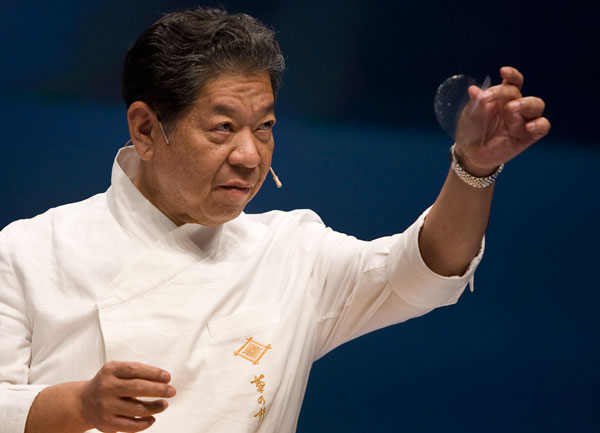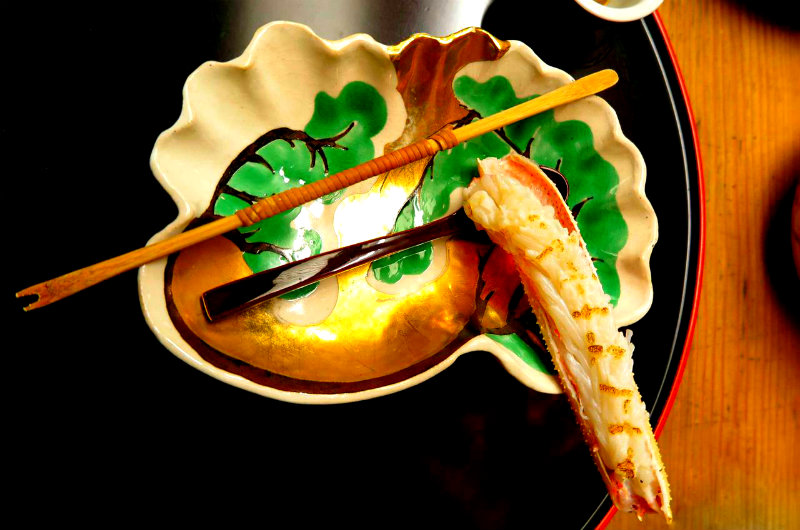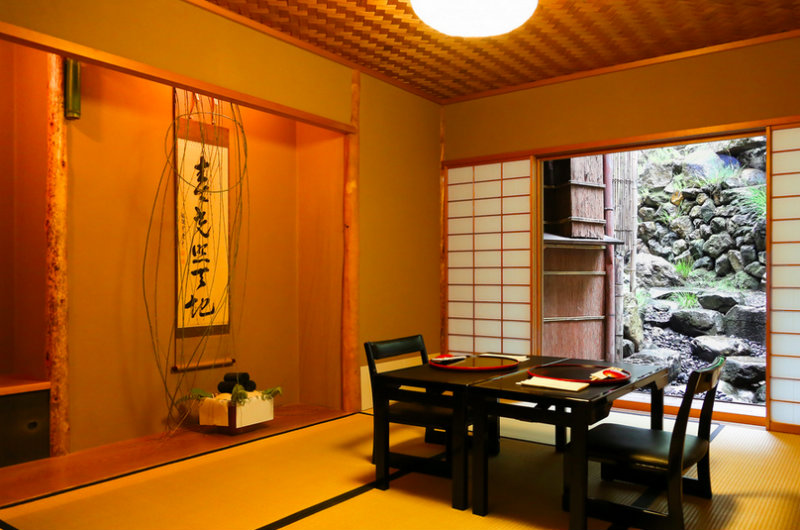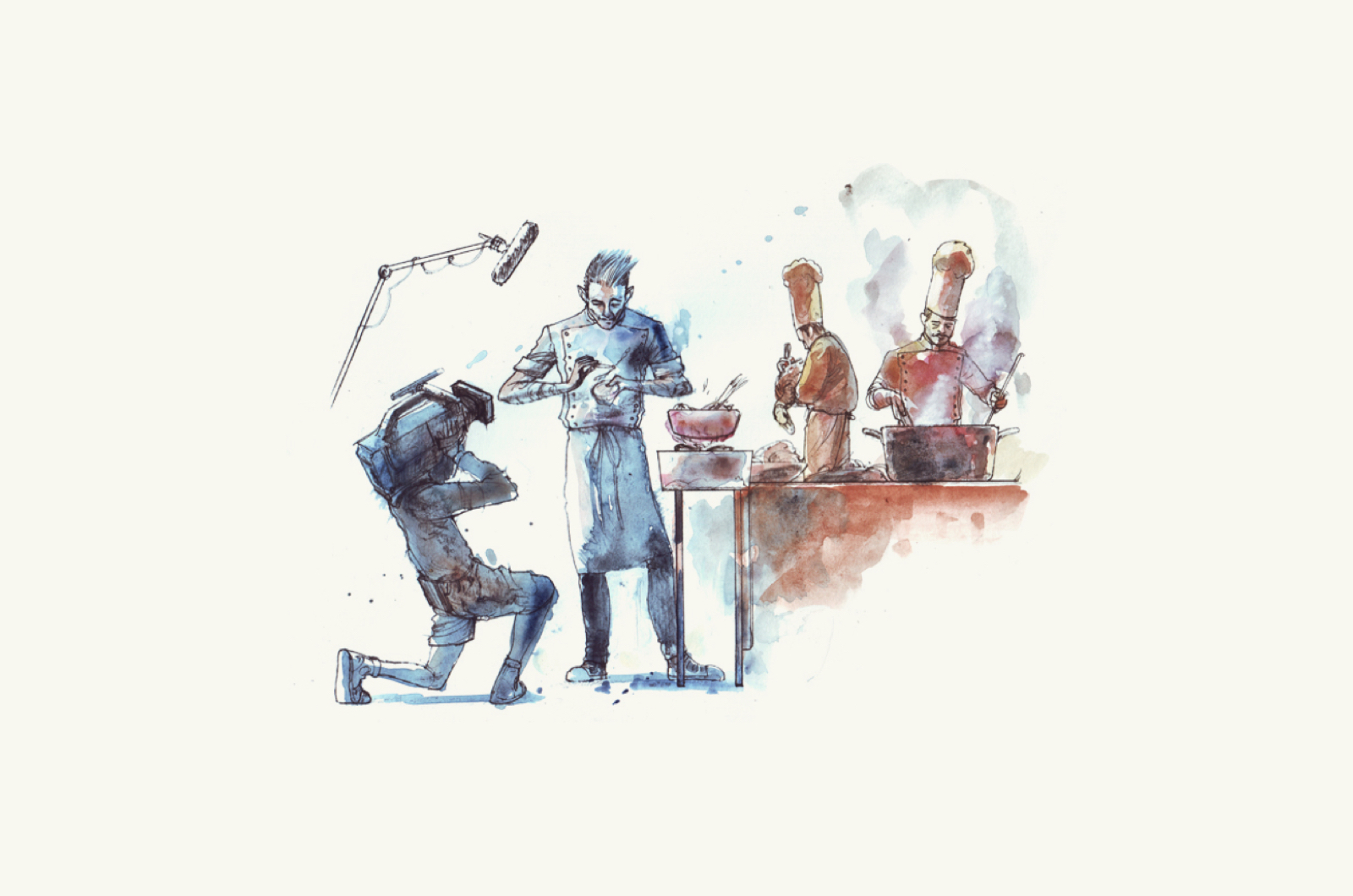A Japanese Master on Innovation Through Tradition
The legendary restaurant Kikunoi has stood in the foothills of Kyoto for more than a century serving food with an even longer history.
Kikunoi’s chef Yoshihiro Murata cooks kaiseki, an elaborate multi-course meal that in Kyoto takes on a regional form known as Kyo-kaiseki, blending local home cooking with the ritual-steeped traditions of imperial banquet and Buddhist temple cuisines. In kaiseki, ingredients are selected not only for their seasonality and flavor but for what they symbolize.
Kaiseki was at first spiritual nourishment for monks. The Chinese characters for kaiseki literally mean “bosom stone,” actual warm stones ascetics carried close to lessen the discomforts of hunger. The concept expanded to mean a simple meal of miso soup and several side dishes offered as part of the tea ceremony to guests at Kyoto inns sometime in the 16th century.
Today’s kaiseki is a parade of elaborately and obsessively composed and plated dishes that resemble little of their humble beginnings. In this way, kaiseki is not the rigid ritual that it is often portrayed to be but an evolving tradition with very deep roots.
At Kikunoi, meals start with light plates that hint at the themes in the many substantial dishes to come. In March, when the last snows fall and the plum blossoms fade into the beginnings of fruit, Murata begins the meal with a single pink ume (pickled plum) blanketed under creamy sea bream milt as if it were snow. By June, the first dish is kanroni, bright green plums simmered in sugar, then topped with bits of sweet, clear ice, a metaphor for stonefruit covered in summer dew.
The meal then progresses to sashimi, simmered vegetables, a soup, a broiled fish, followed by a cold dish to rest the palate, and then a series of protein-rich, but still light, main courses. Gohan, a rice dish accompanied by pickles and soup, always marks the conclusion of the savory dishes and the impending arrival of something sweet.
Every element of each dish, from the texture of the fish to the aroma of the garnish and the shape of the bowl itself, is carefully orchestrated. It is this commitment to labor-intensive details (which seemingly every other cuisine has dispensed with) that inspires many chefs who come to Japan.
In 2007, Daniel Boulud told the Los Angeles Times that the French degustation menu had been borne from “all the big French chefs—Michel Guerard, Paul Bocuse, (Alain) Senderens and (Jean and Pierre) Troisgros” among them, experiencing kaiseki for the first time in the 1970s. They had never seen and tasted anything like it before.
A string of kaiseki-inspired restaurants billed as Japanese haute cuisine followed in places like Los Angeles, New York, and London (Murata’s own very recent foray), serving handfuls of guests for hefty prices and with varied success. The cuisine’s true depths remain out of reach to nearly everyone, yet in the past 40 years, its influence on modern cooking has been profound. Pascal Barbot, Ferran Adria, and Heston Blumenthal have all spent time in Murata’s kitchen. Dashi, the cornerstone of kaiseki’s ethereal but satisfying flavor, is now nearly as ubiquitous as the tasting menu in Western fine dining.
Murata’s own drive to learn the kaiseki tradition came out of an inverse of the West’s experience. Due to inherit Kikunoi like his father had from his father before him, as a senior in college he decided to wander around Europe instead. After six months, he returned to Japan early, disappointed, he says, by what he felt like a Western dismissal of his home cuisine. He returned determined to earn his father’s trust in his ability to run Kikunoi and to carry on both the family business and Japanese cuisine. There was a lot to learn. He did not actually take over until he had trained for nearly three decades and was 48 years old.
In the meantime, while the west adopted certain kaiseki concepts, Murata saw interest within Japan for its own culinary traditions declining. Annual rice consumption has fallen 17 percent since 2000, while domestic demand for meat now exceeds that for fish. Children now grow up eating miso soup from powdered packets and hamburger patties and bread for lunch.
Last year, Murata was part of a successful campaign of a number of prominent Japanese cooks and academics to get washoku, the broad Japanese culinary tradition, designated as a UNESCO intangible cultural heritage, cementing its prestige and likely its commercial legacy.
But in Murata’s case, how do you protect something that few have ever understood, even when your grandfather was cooking it?
“Protecting tradition actually requires evolving,” Murata said through a translator, when we caught up with him in Tokyo in February. “You have to move forward or it will die, but the part you preserve and the part you innovate move in parallel.”
In practice in the Kikunoi kitchen, this means he still uses many of the recipes that were passed on to him by his father and by his father before him, but he continues to look for techniques that bring out and balance flavors more easily and more consistently.
The most famous example of this is his decision to revamp the restaurant’s centuries old dashi recipe.[1] Instead of cooking kombu at a rolling boil for 30 minutes as had always been done, Murata found he could achieve better results keeping the stock below boiling.
Holding the kombu in precisely 60C degree water for an hour and then adding dried bonito for just a few seconds at 80C, he found, extracted the right proportions of glutamic acid from the seaweed and inosinic acid from the fish to maximize the savory quality of the stock, without adding astringency or bitterness. You will find this technique employed in serious kitchens around the world today.
At the Japanese Culinary Academy in Kyoto, Murata teaches students not just how to make dashi in this way but also the chemistry of controlling umami.
When you understand how to manipulate the amino acids and nucleotides behind the fifth flavor, you can use umami as you would any seasoning, he explained.
Knowledge of proper Japanese cooking is the disappearing resource, Murata said. Moving preservation and innovation in parallel then also means acknowledging the fact that some of the development of Japanese cuisine is now taking place outside of Japan. Making knowledge accessible is critical, so he teaches kaiseki concepts to chefs skilled enough to learn them, regardless of where they cook.
But can a Japanese tradition persist if it is adapted and diluted with so many outside influences?
He shrugged. “I learn from other cuisines, many other people, too,” he said. “I just keep the new techniques hidden.”
When we spoke with him, Murata had just enjoyed a meal at Noma during its residency at the Mandarin Oriental in Tokyo, and the experience was on his mind. He brought up the first dish Rene Redzepi had served, a sweet shrimp dotted with wood ants, as an example.
“This dish is Rene’s dish, one of his signatures. But I could never use ants at Kikunoi, because that would be moving too far from tradition,” Murata said. “Insects are not a part of the Kyoto cuisine people expect.”
“If guests could be convinced to see ants simply as a seasoning, rather than as creatures, however, it might work,” he said. “Ants actually are quite delicious, and I’m willing to try anything if it is delicious.”
He recalled when Redzepi had come to learn at Kikunoi in 2009. At the end of his time there, Redzepi had made an interesting prediction. “He said that controlling umami was going to be the next level of fundamental cooking, the next step in the evolution,” Murata said. “Now we see this is indeed the direction worldwide.”
Then Murata made his own prediction: “I think 50 years from now, the borders will be gone. We won’t be talking about Nordic cuisine or Japanese cuisine anymore. It will be about what is delicious, without any sense of nationality. That will be the new cooking tradition.”
[1] Murata’s Dashi: 1. Wipe the surface of a 30g piece of kombu with a moist towel. 2. Combine 1.8L soft water and kombu in a pan on very low heat. Slowly raise temperature to 60C and hold at that temperature for one hour. 3. Remove the kombu and, without letting the liquid ever reach a boil, raise the temperature to 80C. Turn off heat and immediately add 50g dried bonito flakes. 4. Lea ve bonito flakes to soak for 10 seconds, then strain out through a fine sieve covered with a cheese cloth.







